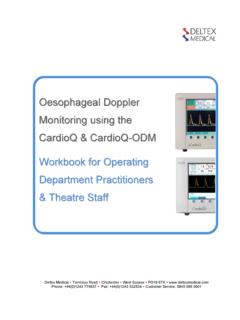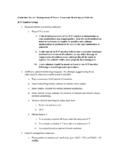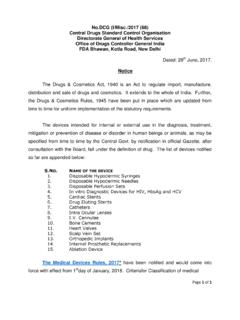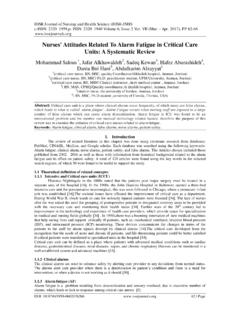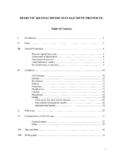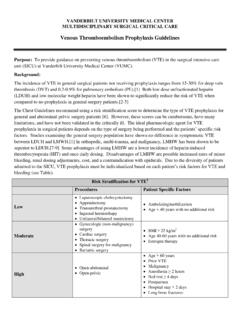Transcription of DATA SHEET 1. REANDRON 2. QUALITATIVE AND …
1 170620 REANDRON 1000 DS DATA SHEET 1. REANDRON 1000 (1000 mg/4 mL solution for injection) REANDRON 1000, 1000 mg/ 4 mL solution for injection 2. QUALITATIVE AND QUANTITATIVE COMPOSITION Each ampoule/vial contains 1000 mg testosterone undecanoate (equivalent to mg testosterone) in a 4 mL solution for injection (250 mg testosterone undecanoate/mL). Each mL solution for injection contains 250 mg testosterone undecanoate corresponding to mg testosterone. For a full list of excipients, see Section 3. PHARMACEUTICAL FORM REANDRON 1000 is a clear, yellowish oily solution for injection. Testosterone undecanoate is a white or off-white crystalline substance. 4. CLINICAL PARTICULARS Therapeutic indications Testosterone replacement in primary and secondary male hypogonadism. Dose and method of administration Dose REANDRON 1000 (1 ampoule/vial equivalent to 1000 mg testosterone undecanoate) is injected every 10 to 14 weeks for testosterone replacement, where testosterone deficiency has been confirmed by clinical features and biochemical tests.
2 Injections with this frequency are capable of maintaining sufficient testosterone levels and do not lead to accumulation. Start of Treatment Serum testosterone levels should be measured before start of treatment and during initiation of treatment. Depending on serum testosterone levels and clinical symptoms, the first injection interval may be reduced to a minimum of 6 weeks as compared to the recommended range of 10 to 14 weeks for maintenance. With this loading dose, sufficient steady-state testosterone levels may be achieved more rapidly. Individualisation of Treatment The injection interval should remain within the recommended range of 10 to 14 weeks. It is advisable to measure and monitor testosterone serum levels regularly, particularly if the dosage regimen is changed or if there is clinical concern about the adequacy or excessiveness of testosterone replacement. Measurements should be performed at the end 170620 REANDRON 1000 DS of an injection interval and clinical symptoms considered.
3 Serum levels below normal range would indicate the need for a shorter injection interval. In case of high serum levels an extension of the injection interval may be considered or administration of a smaller volume could also be considered ( could result in a shorter injection interval). Special populations Elderly Limited data do not suggest the need for a dosage adjustment in elderly patients. Renal impairment No formal studies have been performed in patients with renal impairment. Hepatic impairment No formal studies have been performed in patients with hepatic impairment. The use of REANDRON 1000 is contraindicated in men with past or present liver tumours. Paediatric population Clinical trials with REANDRON 1000 have not been conducted in children or adolescents under the age of 18 and use in this population is not recommended. Method of administration The injections must be administered very slowly.
4 Care should be taken to inject REANDRON 1000 deeply into the gluteal muscle (the only site for which clinical experience has been obtained) following the usual precautions for intramuscular administration. REANDRON 1000 is strictly for intramuscular injection. Special care must be taken to avoid intravenous injection and injections must not be given subcutaneously. For instructions for use/handling to avoid injury when opening the ampoule/vial, see Section Contraindications The use of REANDRON 1000 is contraindicated in men with: androgen-dependent carcinoma of the prostate or of the male mammary gland hypercalcaemia accompanying malignant tumours past or present liver tumours hypersensitivity to the active substance or to any of the excipients The use of REANDRON 1000 in women is contraindicated. Special warnings and precautions for use REANDRON 1000 should be used only if hypogonadism (hyper- and hypogonadotrophic) has been demonstrated and if other aetiologies responsible for the symptoms have been excluded before treatment is started.
5 Testosterone insufficiency should be clearly demonstrated by clinical features (regression of secondary sexual characteristics, change in body composition, asthenia, reduced libido, erectile dysfunction etc.), confirmed by biochemical tests (2 separate blood testosterone measurements) and according to contemporary diagnostic criteria established by endocrine societies. Currently, there is no 170620 REANDRON 1000 DS consensus about age-specific testosterone reference values. However, it should be taken into account that physiologically testosterone serum levels fall with increasing age. Due to variability in laboratory values, all measures of testosterone should be carried out in the same laboratory. Prior to testosterone initiation, all patients must undergo a detailed examination in order to exclude the risk of pre-existing prostatic cancer. Careful and regular monitoring of the prostate gland and breast must be performed in accordance with recommended methods (digital rectal examination and estimation of serum PSA) in patients receiving testosterone therapy at least once yearly and twice yearly in elderly patients and at risk patients (those with clinical or familial factors).
6 Androgens may accelerate the progression of sub-clinical prostatic cancer and benign prostatic hyperplasia. Improved insulin sensitivity may occur in patients treated with androgens who achieve normal testosterone plasma concentrations following replacement therapy. Haemoglobin and haematocrit should be checked periodically in patients on long-term androgen therapy to detect cases of polycythaemia (see Section ). In general, the use of intramuscular injections in patients with acquired or inherited bleeding disorders always has to be taken into account due to the risk of bleeding. Testosterone and its derivatives have been reported to increase the activity of coumarin-derived oral anticoagulants (see also Section ). Testosterone should be used with caution in patients with thrombophilia, as there have been post-marketing studies and reports of thrombotic events in these patients during testosterone therapy.
7 Deep intramuscular injection of testosterone undecanoate is not advisable in men with any form of bleeding or coagulation disorder, including those using anti-coagulants because of the risk of haematoma. Either alternative non-injectable testosterone products should be used or expert advice sought from a haematologist (see Section ). Cases of benign and malignant liver tumours have been reported in users of hormonal substances, such as androgen compounds. If severe upper abdominal complaints or signs of intra-abdominal haemorrhage occur in men using REANDRON 1000, a liver tumour should be included in the differential-diagnostic considerations. Caution should be exercised in patients predisposed to oedema, in case of severe cardiac, hepatic, or renal insufficiency or ischaemic heart disease, as treatment with androgens may result in increased retention of sodium and water. In case of severe complications characterised by oedema with or without congestive heart failure, treatment must be stopped immediately (see Section ).
8 Caution must be taken in patients who have had elevated blood pressure, disturbance in renal function, epilepsy or migraine. The product may elevate blood pressure. The product is not recommended for patients with cardiac insufficiency. Pre-existing sleep apnoea may be potentiated. Androgens are not suitable for enhancing muscular development in healthy individuals or for increasing physical ability. Using REANDRON 1000 might result in a positive finding in doping tests. As with all oily solutions, REANDRON 1000 must be injected strictly intramuscularly and very slowly. Pulmonary microembolism of oily solutions can in rare cases lead to signs and symptoms such as cough, dyspnoea, malaise, hyperhidrosis, chest pain, dizziness, paraesthesia, or syncope. These reactions may occur during or immediately after the 170620 REANDRON 1000 DS injection and are reversible. Treatment is usually supportive, by administration of supplemental oxygen.
9 Suspected anaphylactic reactions after REANDRON 1000 injection have been reported. Certain clinical signs: irritability, nervousness, weight gain, prolonged or frequent erections may indicate excessive androgen exposure requiring dosage adjustment. Periodic testosterone measurements should be made during treatment, particularly when considering dose adjustment. Interference with serological testing Androgens may decrease levels of thyroxine binding globulin, resulting in decreased T4 serum concentrations and in increased resin uptake of T3 and T4. Free thyroid hormone levels, however, remain unchanged and there is no clinical evidence of thyroid insufficiency. Paediatric population In addition to causing masculisation in children, testosterone can cause accelerated growth and bone maturation and premature epiphyseal closure, thereby reducing final height. The appearance of common acne has to be expected.
10 Interaction with other medicines and other form of interaction Androgens may enhance blood sugar levels reducing the effects of insulin. The dosage of the hypoglycaemic agent may need to be lowered. Interactions can occur with medicines that induce microsomal enzymes, which can result in increased clearance of testosterone ( barbiturates). Androgens may interfere with the metabolism of other medicines. Accordingly, plasma and tissue concentrations may be affected increased oxyphenbutazone serum levels have been reported. The metabolism of cyclosporin might be slowed. Moreover, testosterone and derivatives have been reported to increase the activity of coumarin-derived oral anticoagulants, possibly requiring dose adjustment. Independently of this finding, the use of intramuscular injections in patients with acquired or inherited bleeding disorders always has to be taken into account due to the risk of bleeding (see Section ).










